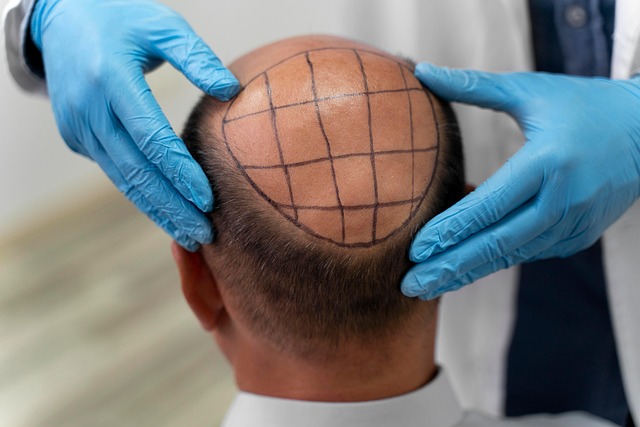5 Emerging Treatments for Alopecia: What You Should Know
Alopecia continues to impact individuals in different ways, but recent developments in hair restoration research are introducing options beyond traditional treatments. This overview explores five promising approaches—from laser-based therapy to biologically tailored solutions—that are drawing attention for how they interact with scalp health and hair follicles. Whether focused on immune response or cellular stimulation, the methods featured here reflect how science is shaping new paths in managing hair loss. Those researching the topic may encounter a range of evolving perspectives and techniques as interest in regenerative approaches grows.

What are hair regrowth serums and how do they work?
Hair regrowth serums are topical solutions designed to stimulate hair follicles and promote new growth. These serums typically contain active ingredients such as minoxidil, peptides, and growth factors. They work by increasing blood flow to the scalp, extending the growth phase of hair follicles, and providing essential nutrients for hair health. Some advanced formulations also incorporate stem cell technology to enhance their effectiveness.
How effective is low level laser therapy for hair loss?
Low level laser therapy (LLLT) has gained traction as a non-invasive treatment for alopecia. This method uses red light wavelengths to stimulate cellular activity in hair follicles. LLLT devices, which come in the form of helmets, caps, or combs, emit photons that are absorbed by weak cells, promoting increased ATP production and improved cell function. Studies have shown promising results in hair density and thickness for both men and women with androgenetic alopecia.
Can microneedling stimulate hair growth in alopecia patients?
Microneedling, a technique originally used for skin rejuvenation, has shown potential in treating hair loss. This procedure involves using a roller or pen device with tiny needles to create micro-injuries on the scalp. These controlled injuries stimulate the production of growth factors and increase blood flow to hair follicles. When combined with topical treatments, microneedling can enhance the absorption and efficacy of hair growth products, potentially leading to improved results for alopecia sufferers.
What role do platelet-rich plasma treatments play in hair restoration?
Platelet-rich plasma (PRP) therapy is an emerging treatment that utilizes the body’s own healing mechanisms to promote hair growth. The process involves drawing a patient’s blood, processing it to concentrate the platelets, and then injecting the platelet-rich plasma into the scalp. PRP contains growth factors that can stimulate dormant hair follicles and improve the health of existing hairs. This treatment has shown promising results, particularly when combined with other hair restoration methods.
How are stem cell therapies advancing alopecia treatment?
Stem cell therapy represents one of the most exciting frontiers in hair restoration research. This approach involves using multipotent stem cells, often derived from adipose tissue or bone marrow, to regenerate hair follicles. These cells have the potential to differentiate into various cell types, including those found in hair follicles. While still in experimental stages, early studies have shown promising results in stimulating hair growth and improving hair density in patients with various forms of alopecia.
What are the latest advancements in hair restoration technologies?
Recent years have seen significant advancements in hair restoration technologies, combining various approaches for more effective treatments. One notable development is the integration of artificial intelligence in diagnosing and planning hair restoration procedures. AI-powered systems can analyze scalp conditions, predict future hair loss patterns, and assist in creating personalized treatment plans.
Another innovative approach is the use of 3D-printed hair follicle grafts. This technology aims to create bioengineered hair follicles that can be transplanted to areas of hair loss, potentially offering a solution for those with limited donor hair availability.
| Treatment | Key Features | Estimated Cost Range |
|---|---|---|
| Hair Regrowth Serums | Topical application, contains active ingredients | $30 - $150 per month |
| Low Level Laser Therapy | Non-invasive, at-home or clinical use | $300 - $3000 for device |
| Microneedling | Minimally invasive, enhances product absorption | $100 - $700 per session |
| Platelet-Rich Plasma | Uses patient’s own blood, growth factor-rich | $500 - $2500 per session |
| Stem Cell Therapy | Regenerative approach, still experimental | $3000 - $10000 per treatment |
Prices, rates, or cost estimates mentioned in this article are based on the latest available information but may change over time. Independent research is advised before making financial decisions.
In conclusion, the landscape of alopecia treatments is rapidly evolving, offering new hope for those struggling with hair loss. From advanced hair regrowth serums to cutting-edge stem cell therapies, these emerging treatments demonstrate the diverse approaches being explored in the field of hair restoration. As research continues, it’s likely that even more innovative and effective solutions will become available, potentially transforming the way we address alopecia in the future.
This article is for informational purposes only and should not be considered medical advice. Please consult a qualified healthcare professional for personalized guidance and treatment.




